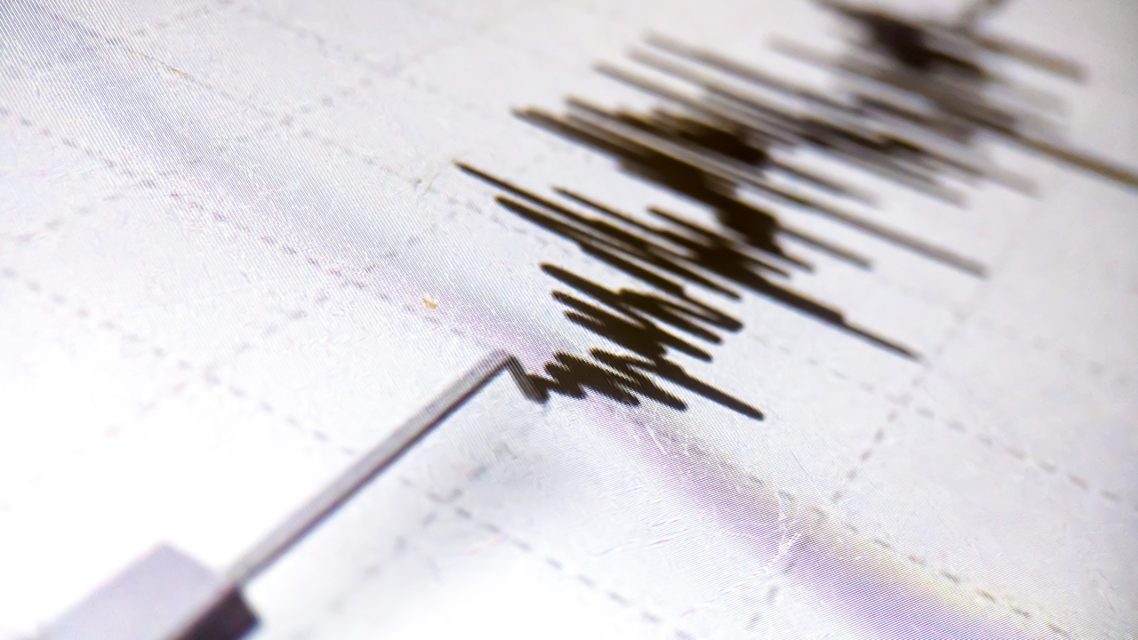SUMMARY
This is AI generated summarization, which may have errors. For context, always refer to the full article.

DAVAO ORIENTAL, Philippines – Davao de Oro Governor Dorothy Montejo-Gonzaga has ordered the suspension of work and classes in all public and private schools across the province following a magnitude 5.9 earthquake – downgraded from magnitude 6.2 – that struck on Tuesday afternoon, March 7.
The earthquake caused panic and resulted in significant damage.
Davao de Oro province experienced a province-wide power outage following the earthquake.
“The whole Davao de Oro province is without electricity now,” said Elvie Camporidondo, operations staff at Davao de Oro’s Provincial Disaster Risk Reduction and Management Office.
It struck on the second day of the province’s celebration of the Bulawan Festival and its 25th founding anniversary, which runs until Wednesday, March 8.
It was the second time since Monday that an earthquake and aftershocks have disrupted classes in Davao de Oro.
Noel Duarte, the provincial director of the Department of the Interior and Local Government in Davao de Oro, said classes had resumed after the morning earthquake and its aftershocks on Monday, but students in public and private schools were asked to go home again due to the stronger earthquake that occurred on Tuesday afternoon.
Duarte said local officials were still evaluating the extent of the damage caused by the most recent earthquake.
Officials have warned of further damage as a result of the earthquake, that struck at 2:02 pm.
Below is a video courtesy of Jeffrey Carillo Diez of a landslide in New Bataan.
A section of the road connecting Talian and Caragan in Maragusan, Davao de Oro has been blocked by a landslide.
On Monday, a weaker earthquake also damaged a section of a national road between Maragusan and New Bataan.
Maragusan was the epicenter of the earthquake, and officials have cautioned the public to prepare for aftershocks.
The magnitude 5.9 earthquake, which the Philippine Institute of Volcanology and Seismology (Phivolcs) said occurred at a depth of 34 kilometers, was also felt in other Mindanao regions.
The earthquake occurred while the Regional Disaster Risk Reduction and Management Council (RDRRMC) and the Office of Civil Defense (OCD) in the Davao Region were conducting a webinar on earthquakes for local officials.
Local government officials in the Davao Region were in the midst of discussions to prepare for the first quarter simultaneous earthquake drill scheduled on Thursday, March 9, when the Tuesday earthquake jolted the region again.
At 4:57 pm on Tuesday, a magnitude 5.6 aftershock struck Davao de Oro and several areas in the Davao Region. Phivolcs said its epicenter was in New Bataan in Davao de Oro province, and had a depth of 11 kilometers.
Fearing more earthquakes and aftershocks, Davao del Norte Governor Edwin Jubahib declared a suspension of all work and classes in public and private schools and offices in the province until March 8.
In a statement, Jubahib said the capitol’s decision was made to ensure the safety and well-being of the residents, employees, and students in the wake of the recent earthquake that struck Davao del Norte.
Below is a video courtesy of Rommel Lopez from PressOne after the earthquake at a supermarket in Tagum.
Phivolcs Director Dr. Teresito Bacolcol said Tuesday’s quake was not an aftershock of the magnitude 6 quake which also hit Davao de Oro on February 1.
“Hindi na po ito (This is not an) aftershock. This is another earthquake. Kasi (Because) usually, an aftershock is one magnitude lower than the main shock,” he told radio DZBB.
He attributed the strong quake to the movement of same Philippine fault, but Tuesday’s quake was due to another part of the fault.
“Last time, noong February 1, ang gumalaw noon ay yung (Last time, on February 1, what moved was the) central Compostela Valley segment. This time, it’s the Caraga River segment of the Philippine fault,” he said.
Bacolcol said the stress from the February 1 movement of the central Compostela Valley segment of the Philippine fault transferred to the Caraga River segment of the fault.
He said the 5.3 magnitude quake that struck Davao de Oro on Monday, March 6 at 4:43 am was also due to movement of the Caraga River segment.
Bacolcol said a similar series of quakes also happened in Cotabato in October 2019, when 4 strong quakes happened in a span of one month. – Rappler.com
Add a comment
How does this make you feel?





There are no comments yet. Add your comment to start the conversation.